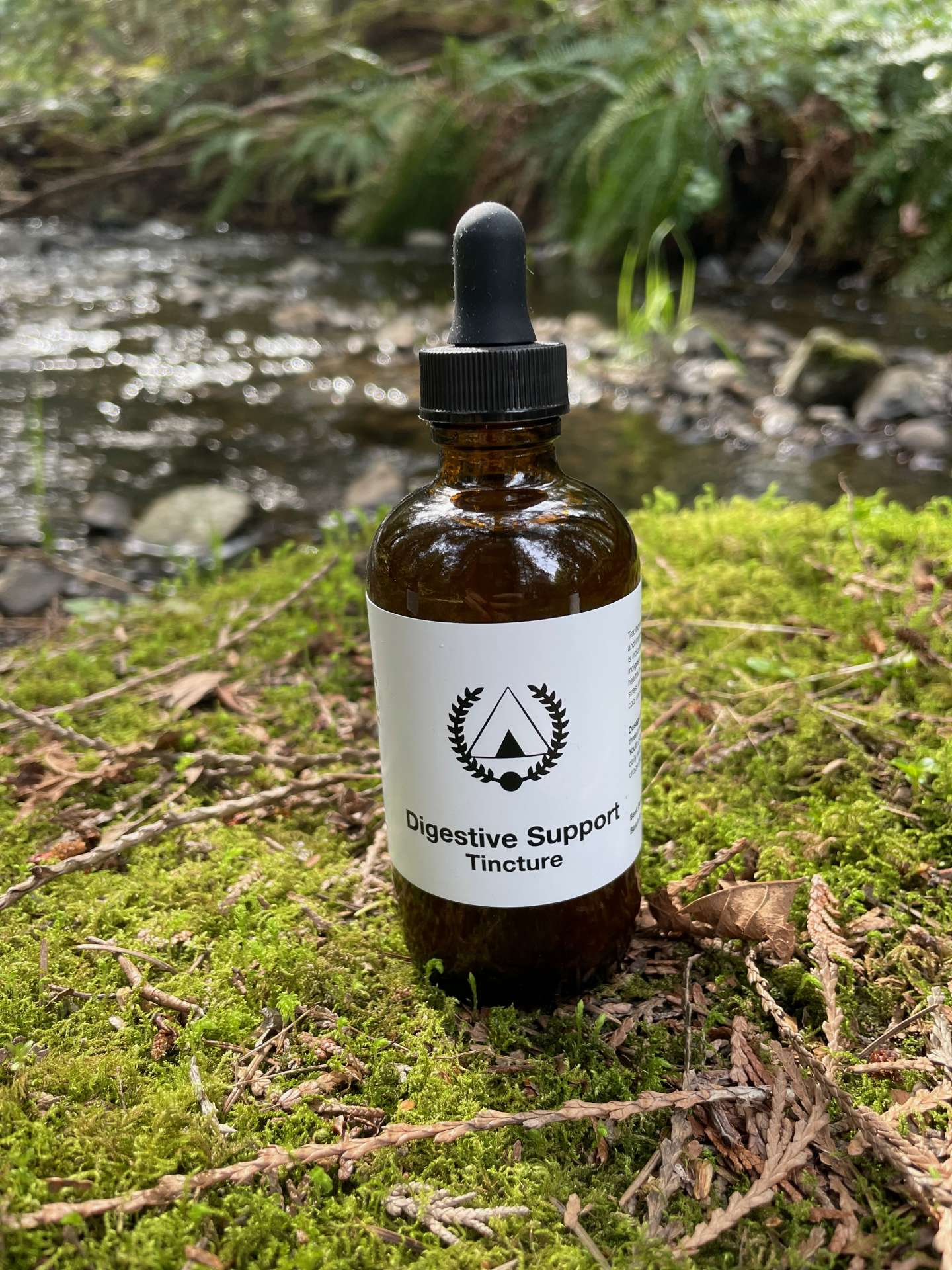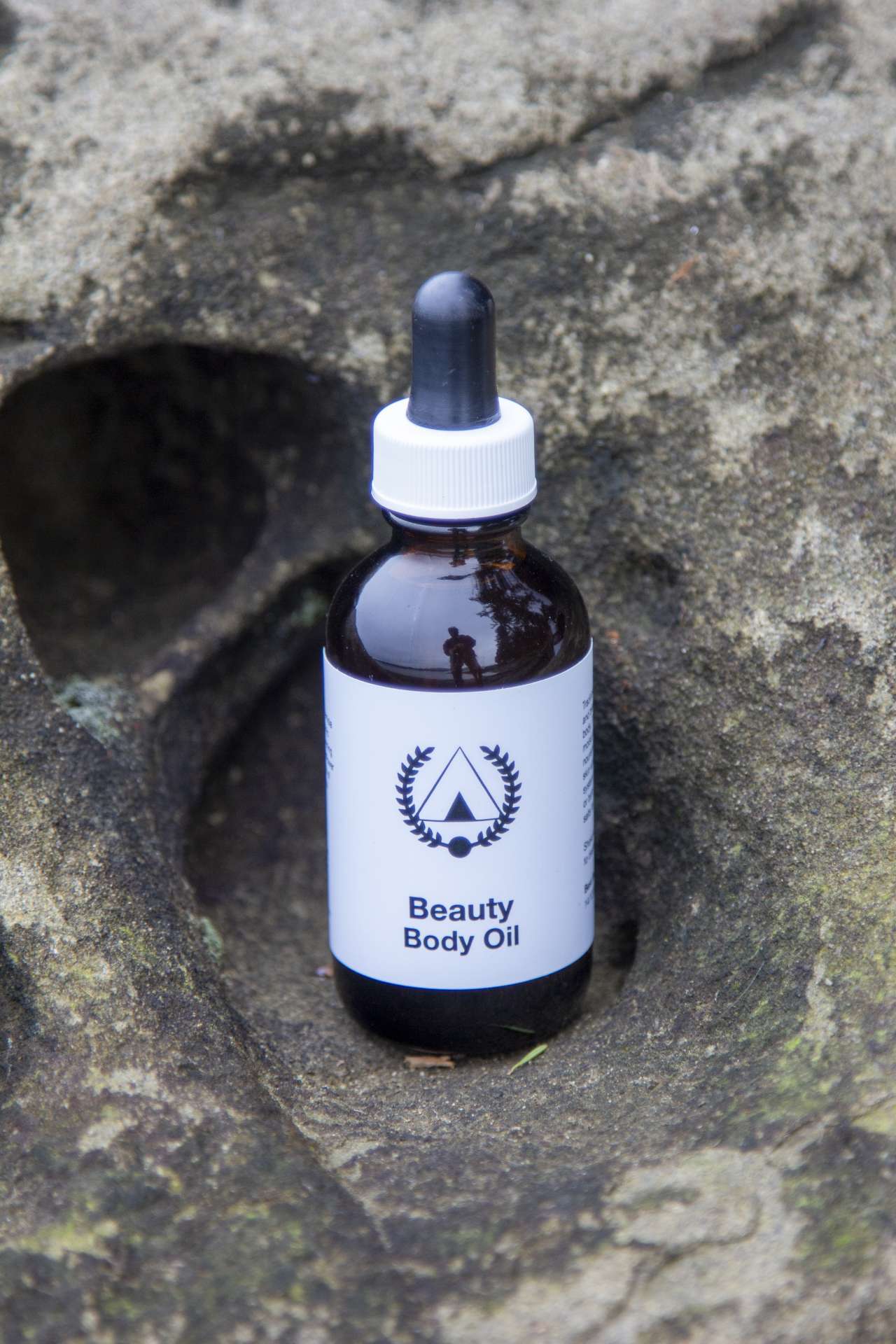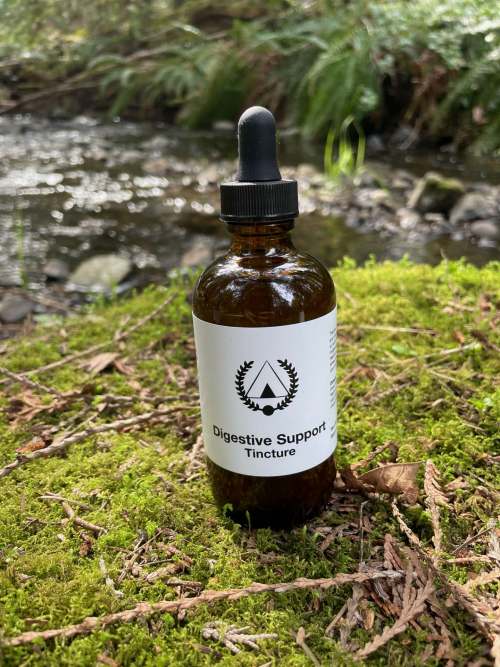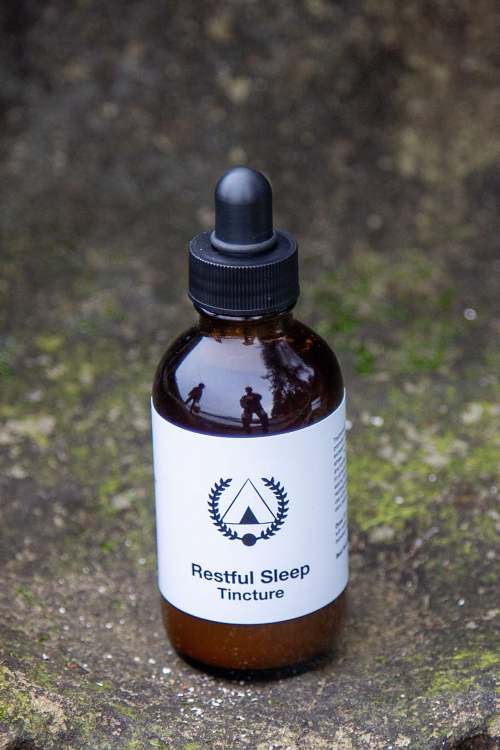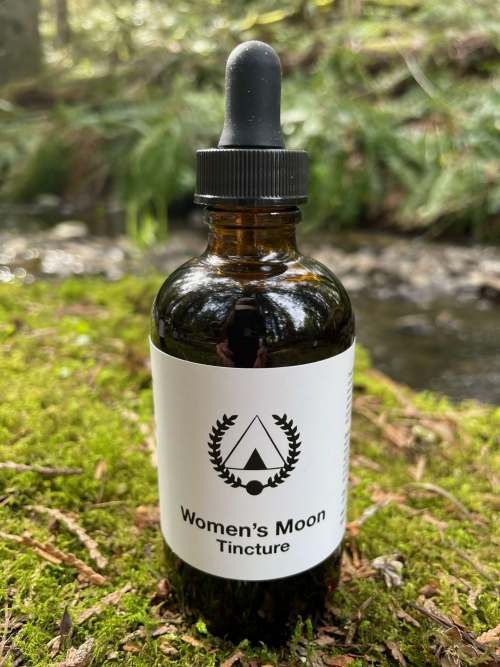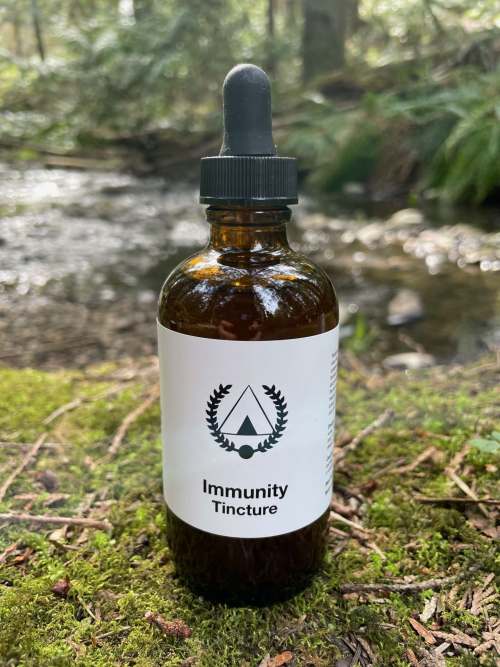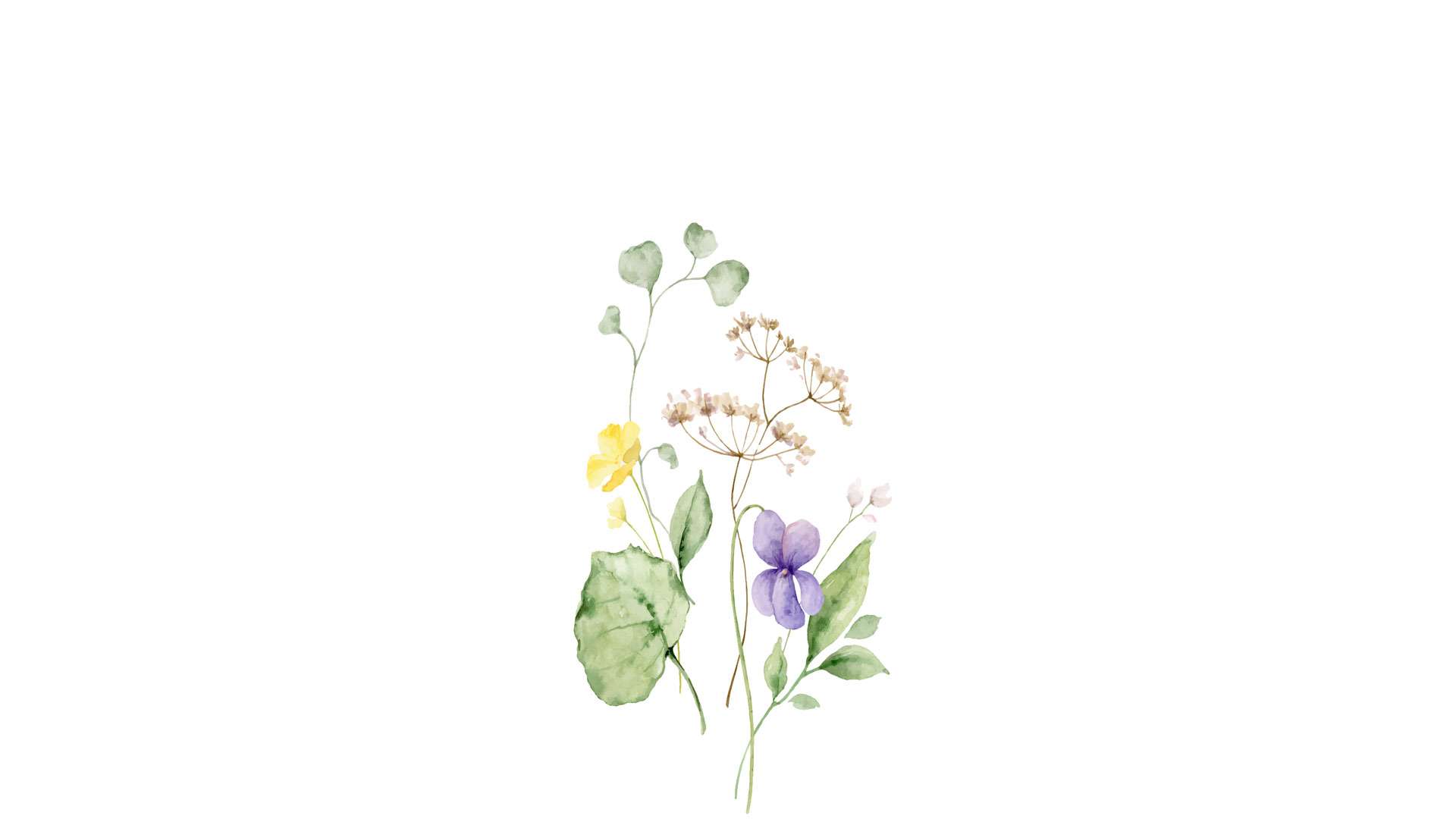BEAUTY BODY OIL
Ingredients: Wild Okanagan Sage (Artemisia tridentata) infused in Organic Oils of Amla (Phyllanthus emblica), Camellia (Camellia sinensis), Evening Primrose (Oenothera biennis), Hemp (Cannabis sativa), and Sunflower (Helianthus annuus) with Organic Essential Oils of Lavender (Lavandula angustifolia), Rose (Rosa damascena), and White Cedar (Thuja occidentalis)
Traditionally used to heal and beautify the skin and body. This remedy assists in moisturizing, softening, and nourishing healthy and glowing skin while calming the nervous system. Apply after a shower or bath, or add directly to bath salts for a relaxing soak. Shake well and apply topically to affected areas as needed.
Plant Medicine Details:
This remedy was crafted from a Big Sagebrush wild harvest done annually on the Summer Solstice in the Okanagan Valley: the traditional territory of the Nsyilxcen (Okanagan) peoples. The medicines are harvested in ceremony and with traditional plant harvest protocols, including prayers and offerings. I acknowledge that I am a grateful visitor on Okanagan territory and I seek to strengthen relations with the land and people through ethical harvesting practices and permission.
I have been on many Sage harvests, either for medicine-making or ceremonial purposes, in connection with esteemed colleagues, children, and Elders, as I believe medicine to be potentiated by the togetherness of community. Big Sagebrush (Nsyilxcen name: cq’was’q’lstn) was used extensively by Southern Interior First Nations peoples. Syilx people drank a tea made by boiling the leaves and branches together to treat sore throats and tonsillitis. Made extra strong, this bitter tea induced heavy sweating in people with colds, which helped them recover faster. The seed heads and branch tips were also boiled together to make a strong tea for tuberculosis and indigestion. The tea acted as a laxative, and people taking it further cleansed by taking sweat-baths before and after drinking the tea. An infusion of the leaves was also drunk to treat smallpox. The leaves of Big Sagebrush contain a highly aromatic organic chemical compound called coumarin. Syilx people mashed the leaves and inhaled this scent to help clear stuffed sinuses.
The roots also have medicinal properties, and when these were steeped in hot water, the resultant tea was drunk to treat colds and sore throats. Big Sagebrush bark is useable year-round. Fibers could be extracted from the bark and twined into rope for weaving mats, baskets, saddle blankets, and quiver cases. Poor people, those who could not afford to trade for better-quality materials or for some reason were unable to procure better-quality materials, used Big Sagebrush bark to make clothing, such as dresses, aprons, and breechclouts. The bark fibers were also used as tinder to start fires. Tightly twisted bark to a length of 60 to 90 centimeters served as a “slow match” for travelers. The wood was used for fuel and for smoking hides that were being tanned. Dried leaves were and still are used for smudging, a form of ritual cleansing (Turner et al., 1980 & Moerman, 1999). The Big Sagebrush Spirit offers the guidance, protection, and wisdom of a Grandmother while purifying and cleansing the body and mind, and softening the skin to create a healthy and youthful glow.
The combination of organic oils and essential oils takes the medicine deeper into the skin and tissues, to calm the nervous system, ground, and assist in reaching the wise mind through the heart. Grandmother Big Sagebrush asks us to contemplate what our innate wisdom is trying to teach us so that we may walk on the Earth with patience, love, and kindness, in the knowing that we are always guided and protected along the way as children of Creator.
Caution: Even in a short duration, Sage should not be used during lactation, unless the mother desires to dry up the milk.
Best Before: 14/12/2023
Size: 50ml
Price: $30.00
Weight & Dimensions: 107g – 11cm x 4cm x 3.5cm
Number of Items in Stock: 14
References:
Moerman, Daniel E. (1999). Native American Ethnobotany. Portland, Oregon: Timber Press. Inc.
Turner, Nancy J., Randy Bouchard, and Dorothy I. D. Kennedy (1980). Ethnobotany of the Okanagan-Colville Indians of British Columbia and Washington. Victoria, BC: British Columbia Provincial Museum.
 The material provided on this website is intended for educational and informational purposes only, and has not been evaluated by Health Canada. The information provided on this site is not intended to diagnose, treat, or cure medical conditions, and is not a substitute for a professional medical opinion. If you have a medical problem, please contact your herbalist or health care professional. If you are taking prescription medications or drugs please consult with your herbalist or health care professional before using herbal medicines to ensure efficacy and safety. All of the products on this site are food grade, made naturally and organically without synthetic chemicals, and food safety is exercised in the manufacturing process.
The material provided on this website is intended for educational and informational purposes only, and has not been evaluated by Health Canada. The information provided on this site is not intended to diagnose, treat, or cure medical conditions, and is not a substitute for a professional medical opinion. If you have a medical problem, please contact your herbalist or health care professional. If you are taking prescription medications or drugs please consult with your herbalist or health care professional before using herbal medicines to ensure efficacy and safety. All of the products on this site are food grade, made naturally and organically without synthetic chemicals, and food safety is exercised in the manufacturing process. The material provided on this website is intended for educational and informational purposes only, and has not been evaluated by Health Canada. The information provided on this site is not intended to diagnose, treat, or cure medical conditions, and is not a substitute for a professional medical opinion. If you have a medical problem, please contact your herbalist or health care professional. If you are taking prescription medications or drugs please consult with your herbalist or health care professional before using herbal medicines to ensure efficacy and safety. All of the products on this site are food grade, made naturally and organically without synthetic chemicals, and food safety is exercised in the manufacturing process.
The material provided on this website is intended for educational and informational purposes only, and has not been evaluated by Health Canada. The information provided on this site is not intended to diagnose, treat, or cure medical conditions, and is not a substitute for a professional medical opinion. If you have a medical problem, please contact your herbalist or health care professional. If you are taking prescription medications or drugs please consult with your herbalist or health care professional before using herbal medicines to ensure efficacy and safety. All of the products on this site are food grade, made naturally and organically without synthetic chemicals, and food safety is exercised in the manufacturing process.

